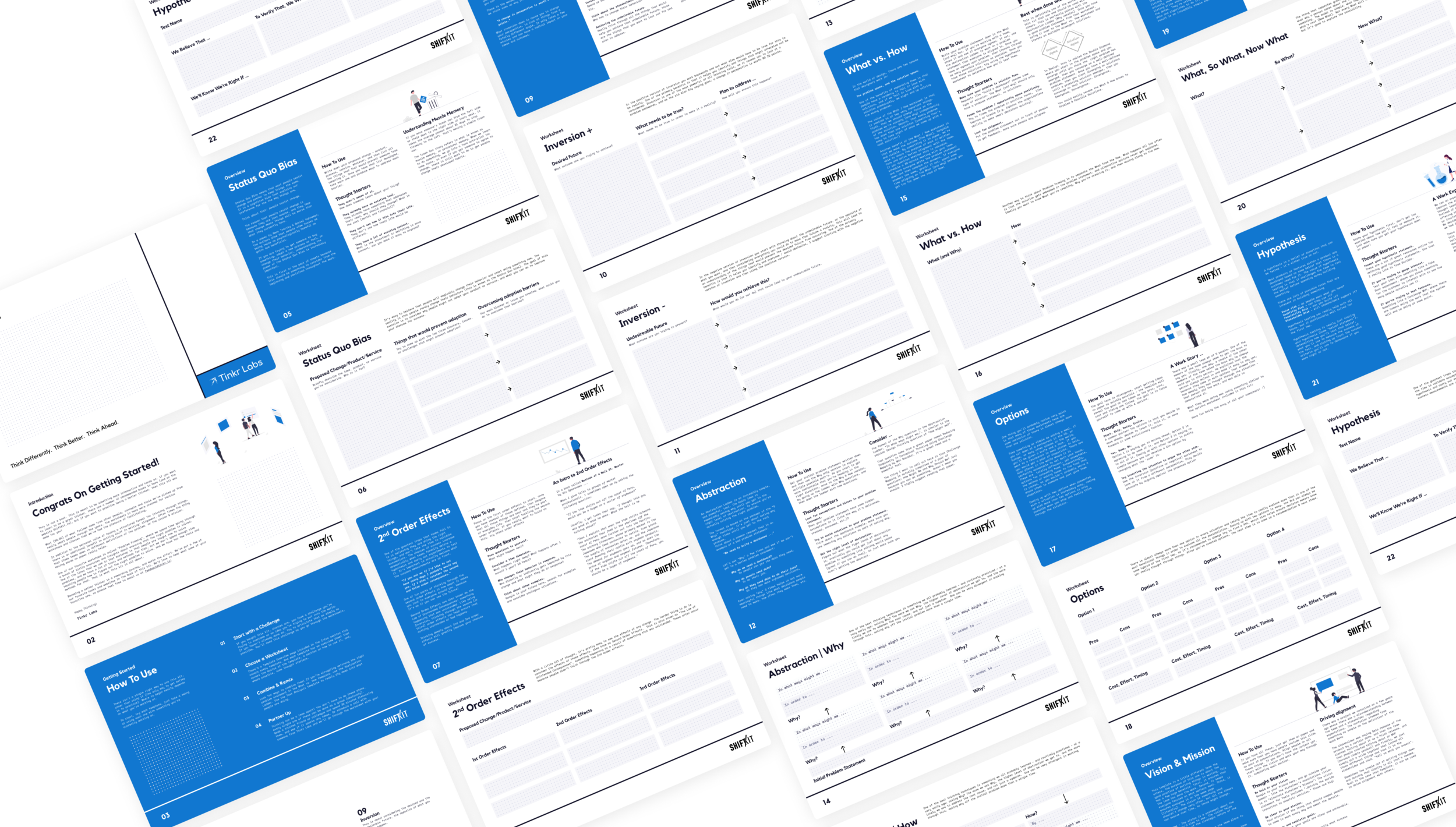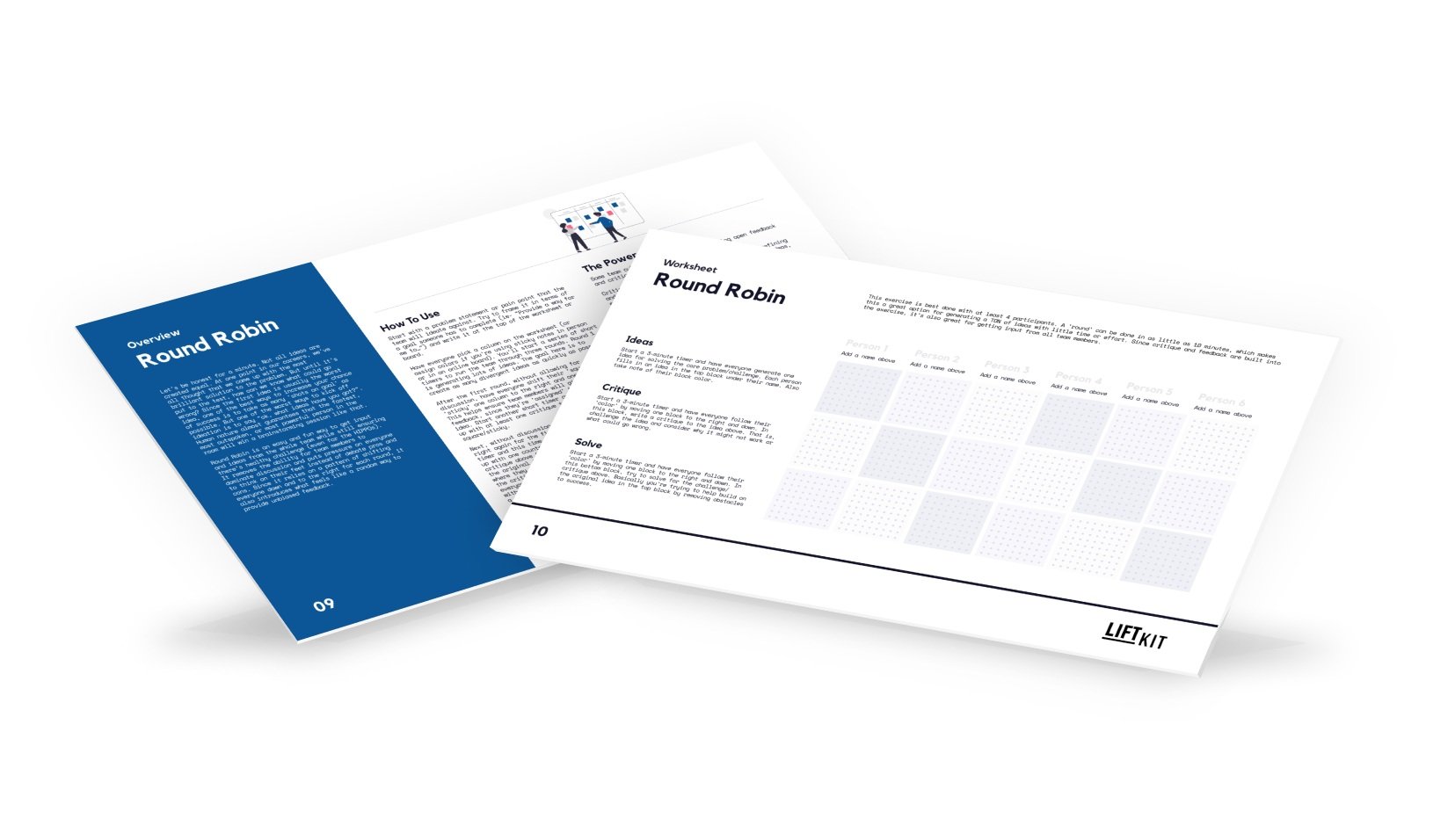
18 Badass templates
to help you level up.
Shift Kit
Challenge. Adjust. Align.
Lift Kit
Ideate. Explore. Refine
“I spent 15 minutes doing an abstraction ladder and it changed my entire product direction.”
— Tim, Product Manager
STEALTH STARTUP
WHY WE MADE SHIFT KIT
-

Built From Experience
We’ve been doing this for decades and we know how hard it can be to change culture, ship products, and get teams unstuck. We’ve been using and refining the templates in Shift Kit for years. You benefit from years of our struggle.
-

Great Design Matters
You probably already use tools for notes, ideas, and getting work done. So we crafted templates just for you. Shift Kit was built to work seamlessly in Notion, Miro, Apple Notes, Evernote, and anywhere else you do your thinking.
-

High Value
Lots of companies offer “Design Thinking” workshops and materials at a high cost. We built Shift Kit to be affordable and accessible for everyone. The more people that think this way, the more the world benefits.
Decision Matrix
Often called a “2x2”, this versatile exercise is a fast and powerful way to make decisions.
VisionType
Creating a VisionType is a really effective way to tell a story about your product or service in a simple and shareable way.
Visualizing
Sometimes imagining a future goal being achieved can help you work backward to define what’s needed to bring it about.
Storyboarding
Storyboarding is kind of like making your own comic book story of how someone would experience your product or service.
Crazy Eights
Crazy eights is a great exercise to help train your brain to think more creatively and come up with more ideas.
Round Robin
Round Robin is an easy and fun way to get input and ideas from the whole team while still ensuring there’s healthy challenge.
Landscaping
Inspiration can come from many places, but one of the best is often in your own back yard.
Vision & Mission
One of the most important things that you can do to align a team, is to have clarity in purpose.
Hypothesis
The chances of success increase dramatically when teams formally define a hypothesis.
What, So What
The model is simple: what happened, why it matters to them (So What), and what’s next (Now What).
What Vs. How
It’s important to separate the What from the How so that the solution doesn’t get embedded in the problem statement.
Abstraction
The more we ask “Why”, the more likely we are to address the root cause, and not just a symptom.
Second ORder
It’s easy to think through the consequences of something. It’s harder to consider the result of something that was unintended.
Status Quo Bias
It’s important to consider why people might not adopt your idea, and what you can do to improve your chances for success.




















